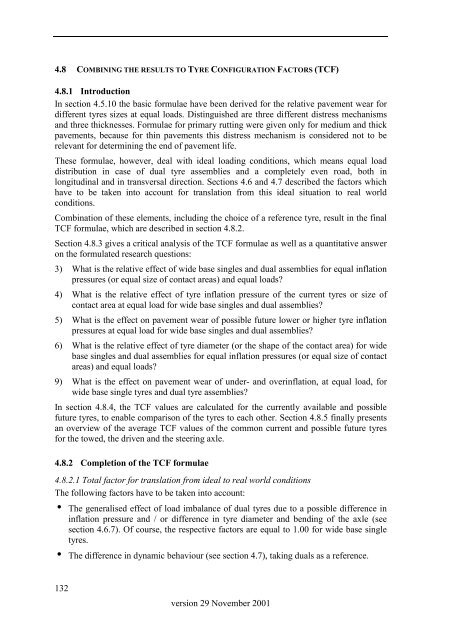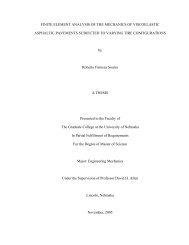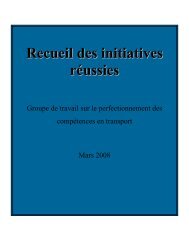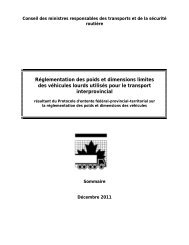Create successful ePaper yourself
Turn your PDF publications into a flip-book with our unique Google optimized e-Paper software.
4.8 COMBINING THE RESULTS TO TYRE CONFIGURATION FACTORS (TCF)4.8.1 IntroductionIn section 4.5.10 the basic formulae have been derived for the relative pavement wear fordifferent tyres sizes at equal loads. Distinguished are three different distress mechanismsand three thicknesses. Formulae for primary rutting were given only for medium and thickpavements, because for thin pavements this distress mechanism is considered not to berelevant for determining the end of pavement life.These formulae, however, deal with ideal loading conditions, which means equal loaddistribution in case of dual tyre assemblies and a completely even road, both inlongitudinal and in transversal direction. Sections 4.6 and 4.7 described the factors whichhave to be taken into account for translation from this ideal situation to real worldconditions.Combination of these elements, including the choice of a reference tyre, result in the finalTCF formulae, which are described in section 4.8.2.Section 4.8.3 gives a critical analysis of the TCF formulae as well as a quantitative answeron the formulated research questions:3) What is the relative effect of wide base singles and dual assemblies for equal inflationpressures (or equal size of contact areas) and equal loads?4) What is the relative effect of tyre inflation pressure of the current tyres or size ofcontact area at equal load for wide base singles and dual assemblies?5) What is the effect on pavement wear of possible future lower or higher tyre inflationpressures at equal load for wide base singles and dual assemblies?6) What is the relative effect of tyre diameter (or the shape of the contact area) for widebase singles and dual assemblies for equal inflation pressures (or equal size of contactareas) and equal loads?9) What is the effect on pavement wear of under- and overinflation, at equal load, forwide base single tyres and dual tyre assemblies?In section 4.8.4, the TCF values are calculated for the currently available and possiblefuture tyres, to enable comparison of the tyres to each other. Section 4.8.5 finally presentsan overview of the average TCF values of the common current and possible future tyresfor the towed, the driven and the steering axle.4.8.2 Completion of the TCF formulae4.8.2.1 Total factor for translation from ideal to real world conditionsThe following factors have to be taken into account:i The generalised effect of load imbalance of dual tyres due to a possible difference ininflation pressure and / or difference in tyre diameter and bending of the axle (seesection 4.6.7). Of course, the respective factors are equal to 1.00 for wide base singletyres.i The difference in dynamic behaviour (see section 4.7), taking duals as a reference.132version 29 November 2001






